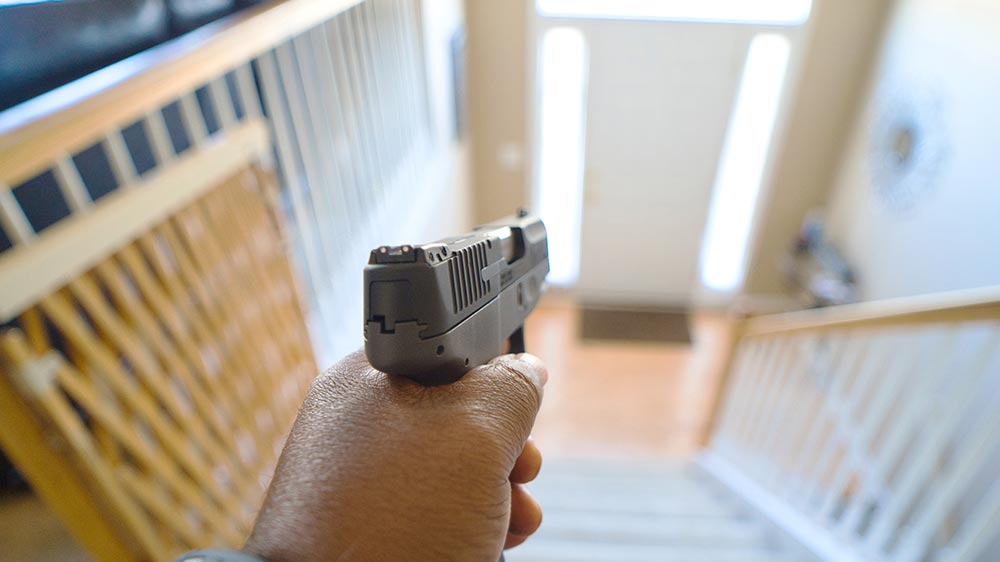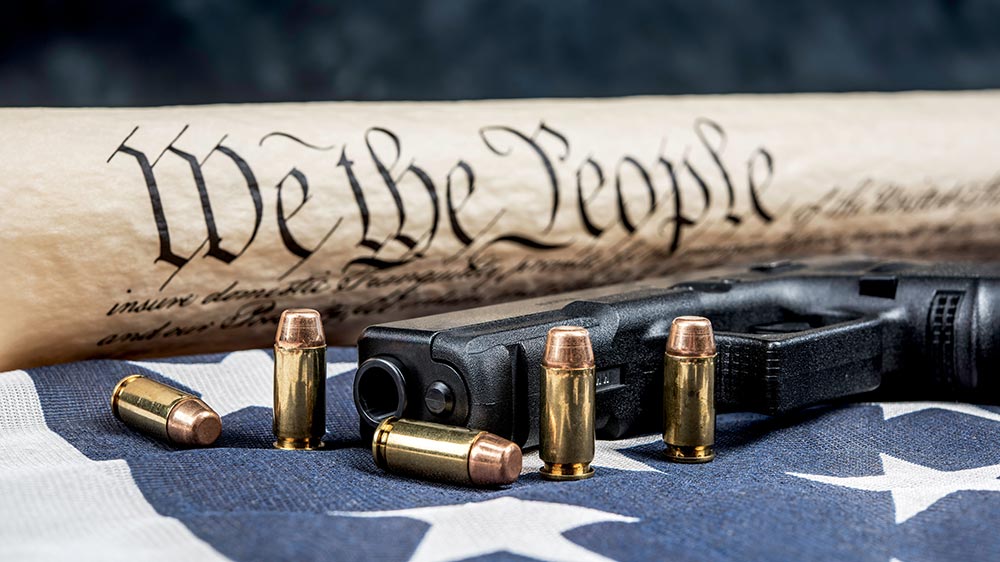Disclaimer
This article is for informational purposes only and should not be construed as legal advice. Laws, especially those related to firearms and self-defense, can change frequently and vary between jurisdictions. Consult a legal expert for advice tailored to your situation.
Stand Your Ground laws have been a focal point in discussions surrounding self-defense legislation in the United States. These laws, enacted in some states, eliminate the “duty to retreat” in certain situations, allowing individuals to use force, even deadly force, to defend themselves against an imminent threat.
Below, we explore the concept of Stand Your Ground laws and list states where such laws are in place.
What Are Stand Your Ground Laws?
Stand Your Ground laws empower individuals, who are armed and perceive an immediate threat, to utilize deadly force when necessary, without the requirement to first withdraw from the situation. These laws eliminate the duty to retreat, varying by state in their application to scenarios involving lethal force. While some states maintain a retreat obligation in cases where lethal force is used, others dispense with the retreat duty entirely, allowing for the use of deadly force in all situations where a person feels imminently endangered.
How Stand Your Ground Laws Developed
Stand Your Ground (SYG) laws in the United States evolved from the Castle Doctrine, an ancient English Common Law principle asserting one’s right to defend their home without the duty to retreat. This concept expanded beyond the confines of the home, leading to SYG laws that allow individuals to use force, including deadly force, in self-defense without retreating, in any place they have a legal right to be. The modern incarnation of these laws began to crystallize with Florida’s statute in 2005, setting a precedent that over half the states in the U.S. would follow, each with variations in the law’s application and scope. The spread of Stand Your Ground laws has triggered a whole lot of discussion and disagreement. Supporters believe these laws are crucial to shield people defending themselves against looming dangers. On the other hand, naysayers argue that they promote needless aggression and a ‘fire first’ attitude, sometimes intensifying racial conflicts. The chat about SYG laws is far from over, it’s a tough tug of war between personal defense and keeping folks safe. As we navigate legal roadblocks, push for new laws, and as people change their minds on the matter, these rules are always changing. It’s complex stuff that makes you think hard about safety versus freedom.
States with Stand Your Ground Laws
As of my last update in September 2021, approximately half of the U.S. states have Stand Your Ground laws. Please note that laws change, and new legislation can be enacted after this article’s last update. Make sure to check the most current laws in your state. These states include:
Key Considerations
Stand Your Ground (SYG) laws are a big deal in U.S. self-defense law. They have loads of aspects that not only influence how they’re used in courtrooms but also affect society at large. To really get a grip on these Stand Your Ground laws, you’ve gotta dive deep into the nuts and bolts of what they’re all about. It’s not just about knowing them – it’s also about understanding their legal impact, getting your head around the fiery debates over whether they work or if they’re even ethical in the first place. So yeah, we’re talking serious study here – this isn’t some light reading for a lazy Sunday afternoon! Here are the key considerations of SYG laws:
Legal Right to Self-Defense Without Retreat:
SYG laws allow individuals to use force, including deadly force, in self-defense without the obligation to retreat when they reasonably believe such force is necessary to prevent imminent death or great bodily harm. So, this concept is a pretty big shift from usual self-defense laws that usually ask you to try and get away safely if you can, particularly when you’re not in your own home.
Location and Scope:
The applicability of SYG laws varies by state, with some states applying these principles anywhere a person has a legal right to be, and others limiting the scope to the individual’s home, vehicle, or workplace. In self-defense legal battles, the specifics of how SYG laws are enacted can be a game-changer – mastering these nuances could spell triumph or disaster in court.
Burden of Proof:
SYG laws alter the traditional burden of proof in self-defense cases. In jurisdictions with SYG laws, the prosecution may need to prove beyond a reasonable doubt that the defendant’s use of force was not justified, rather than the defendant having to prove that it was. This game changer seriously alters how lawyers play their cards and the end results of court battles.
Immunity from Prosecution:
Certain stand-your-ground laws give you a break from being prosecuted if your self-defense force checks out with the law’s rules, which might even involve an early hearing to figure out whether these defenses apply. This aspect can prevent the costs and burdens of a trial for individuals whose actions are deemed justifiable under the law.
Societal and Cultural Impacts:
SYG laws reflect and influence societal attitudes toward self-defense, gun ownership, and personal safety. But let’s chat about the ripple effect these SYG laws have stirred up. It’s not just crime rates that are taking a hit, public safety is in the crosshairs too. And guess what else? There seems to be some real unevenness in how self-defense laws apply across different races. Dissenters contend that these Stand Your Ground laws may inadvertently prompt individuals to respond with heightened aggression when they perceive a threat, thereby amplifying the tension already present in society.
Racial Disparities and Controversies:
Analysis of SYG cases has sometimes revealed racial disparities in the application and outcomes of these laws, leading to public outcry and calls for reform. Famous cases have sparked questions about how race influences our sense of danger and the choice to use lethal force. This underlines the need for constant examination and potential tweaks to make sure justice is served fairly.
Legislative Variability:
The specifics of SYG laws vary widely among states, including differences in the legal definitions of reasonable fear, the settings in which the law applies, and the protections offered. Because SYG laws are so different from one state to another, it’s crucial to grasp the ins and outs of how these laws work in each individual state and how courts interpret them.
Conclusion
Stand Your Ground laws are a significant aspect of self-defense legislation in the United States, but they are not universal. The laws differ widely from state to state in terms of their scope, application, and associated legal protections. Understanding the law in your jurisdiction is crucial for anyone concerned with issues of self-defense and public safety.
For the most accurate and tailored advice, consult a legal expert familiar with the self-defense laws in your state.








